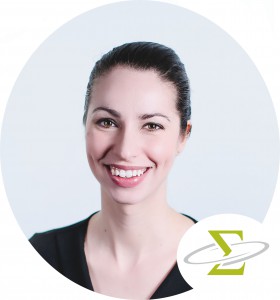Why 360-Degree Feedback is Best for Assessing Leader Character
More than 85% of Fortune 500 companies currently use a 360-degree feedback process in their leadership development.[i] That’s an incredible percentage! Why are these leadership assessments so important? Are they more effective than self-assessments alone? And how accurate are they at assessing leadership character, which is a rather non-traditional measure of performance? Let’s take a look.
What is 360-Degree Feedback?
360-degree feedback refers to feedback that is collected from multiple sources rather than just one — such as self-assessment or feedback from a superior. 360-degree feedback usually includes feedback from supervisors, colleagues, and direct reports. The goal of a 360-degree assessment is to gather multiple perspectives to provide a comprehensive appraisal of an employee’s performance or potential. Perspectives from different relationships are important because an individual may behave differently among peers than they do with direct reports or superiors. By consulting raters who have experienced the individual in each of these capacities, 360-degree assessments provide much more holistic feedback than self- or single-rater assessment. For more information about 360-degree feedback in general, read our Frequently Asked Questions blog, where we answer the Top Six 360-Degree Feedback Questions.
How 360-Degree Feedback Can Help Overcome Personal Biases
Research has shown that most people struggle to accurately assess their own character. A study done by KRW International, a Minneapolis-based leadership consultancy, looked at 84 CEOs and their scores on a 360-degree assessment of leader character. CEOs whose employees rated them high on integrity, responsibility, forgiveness, and compassion were called “‘virtuoso leaders,” while CEOs whose employees rated them low on these qualities were labelled “self-focused leaders.” Although all leaders in the study rated themselves as having strong character, only about 30% of them were correct.
KRW co-founder Fred Kiel spoke to this blind spot among self-focused CEOs. Said Kiel, “Virtuoso CEOs rated themselves a little lower than their employees rated them — indicating a certain level of humility and self-awareness. But the self-focused CEOs rated themselves 30 points higher than their employees rated them, and higher than the virtuosos rated themselves.”[ii]
From this statement, we can conclude that approximately 7 out of 10 individuals overestimate the strength of their character. That’s why 360-degree assessment can be an invaluable tool for providing not only a holistic, but a realistic, measure of leader character.
How to Use Self-Assessments & 360-Degree Assessments Together
While 360-degree assessments are more comprehensive than self-assessments, there is a time and a place for using each type of assessment. There is also a benefit to using both! Organizations often opt for self-assessment because it takes less time, and involves fewer people. Self-assessment may be enough to identify leadership development opportunities, or screening during a hiring process. However, if you are looking to create a thorough internal talent development program, you will want to employ both self- and 360-degree assessments – particularly for a construct like leader character, which cannot always be accurately assessed by an individual themselves.
Here’s how you can use self- and 360-degree assessments together, to create a comprehensive leader character development process:
- Self-assessments are ideal for taking baseline measures. Self-assessments should be used at the beginning of the development process to gauge strengths and identify opportunities for development.
- 360-degree assessments are ideal for measuring progress. After 6-12 months of development, a 360-degree assessment can be used to collect feedback from multiple sources about the progress an individual has made towards their development goals. Progress can be measured by comparing 360-degree feedback to the initial self-assessment. Improvements in scores demonstrate how development efforts have contributed to growth over time.
Ready to Get Started?
If you’re ready to start using 360 degree feedback with your leaders, take a look at SIGMA’s Leadership Character Insight Assessment (LCIA). This gold-standard test for leader character is available both as a self-assessment and as a 360-degree assessment. Take a look at the website to learn more and download a free sample report.
If you have questions about your scores from the LCIA-360, contact SIGMA’s leadership consultant Ruby Nadler. Ruby has extensive experience in leader character and uses her knowledge to support and coach leaders to hone critical competencies, including judgment and decision-making skills, interpersonal skills and emotional intelligence, and stress reduction. She would be happy to discuss your results and tell you more about the LCIA.
Talk to Ruby

Dr. Ruby Nadler has a Ph.D in Cognition and Perception, as well as specific training in mindfulness and positive psychology. She brings this expertise to SIGMA’s executive coaching programs. In 2015 she was awarded a two-year Ontario Centers of Excellence TalentEdge Fellowship, and her research has been featured on CBC, BBC Radio, Happify, and NPR. Call or email Ruby – she would be happy to answer questions about the LCIA, leader character, coaching, etc.
Phone: 1-800-401-4480 ext. 223
[i] Zenger, . (March 10, 2016). How Effective Are Your 360-Degree Feedback Assessments? Forbes. Retrieved from https://www.forbes.com/sites/jackzenger/2016/03/10/how-effective-are-your-360-degree-feedback-assessments/?sh=7f48952ca690.
[ii] Christensen, K. NA. Fred Kiel | on ‘return on character’. Rotman Management Magazine. Retrieved from https://www.rotman.utoronto.ca/Connect/Rotman-MAG/IdeaExchange/Page3/Fred-Kiel.